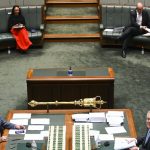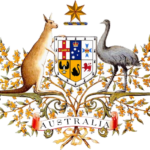Research revamp recommended
Researchers have welcomed a new plan by the Strategic Review of Health and Medical Research in Australia to boost funding to the sector. Tony Peacock says if the recommendations are accepted we will see a decade of major cultural change in the medical research scene in Australia.
The highly anticipated Strategic Review of Health and Medical Research in Australia recommends a significant revamp of current systems to achieve the goal of "better health through research". The Committee, which received more than 300 submissions, has recommended that the National Health and Medical Research Council (NH&MRC) take an expanded leadership role across all aspects of medical research.
Currently, the NH&MRC is responsible for about half of Australia’s annual public health research spending of $1.5bn. The Review recommends that this figure grow substantially over the next decade, but initially it be consolidated within the NH&MRC with the Council (possibly renamed) taking responsibility for research translation, tracking, reporting and monitoring of outcomes.
The highly anticipated Strategic Review of Health and Medical Research in Australia recommends a significant revamp of current systems to achieve the goal of "better health through research". The Committee, which received more than 300 submissions, has recommended that the National Health and Medical Research Council take an expanded leadership role across all aspects of medical research.
Currently, NH&MRC is responsible for about half of Australia’s annual public health research spending of $1.5bn. The Review recommends that this figure grow substantially over the next decade, but initially it be consolidated within the NH&MRC with the Council (possibly renamed) taking responsibility for research translation, tracking, reporting and monitoring of outcomes. At the moment, the NH&MRC does some work across the spectrum but concentrates on creating new knowledge – the Review recommends the Council grow substantially in more providing effective research translation and improving health services research, especially in the areas of minimising waste and adverse events.
Many researchers will welcome recommendations for longer-term research contracts and streamlined competitive grant processes. The vast bulk of submissions to the Review lobbied for the balance of research towards translational research. To a large extent, the McKeon Committee has responded positively to this message.
Not many of those making submissions dealt with the process of revamping medical research. The Committee has gone with a bigger NH&MRC given the mandate to lead and get on with the job. They note in the consultation paper that they considered alternatives.
Presuming the Government accepts the recommendations, we will see a decade of major cultural change in the medical research scene in Australia. Done well, the outcomes could be very positive. Useful similarities can be made with the major changes made in the Primary Industries and Energy R&D Act 1999 when the Hawke Government reformed the rural R&D councils to become Corporations, lead by end users.
At that time, we saw a massive cultural shift in how research was done in rural Australia. Instead of receiving an annual call for research and picking the top 10 or 15%, the Rural R&D Corporations had to articulate five-year plans, giving guidance on where they wanted to go. Researchers no longer put ideas up on a blank page, but had directions sketched out. These days, probably less than 25% of R&D in rural Australia is done by an open call. Almost no one argues to bring the old system back (I say "almost" because I’m sure Emeritus Professor David Lindsay of UWA could still prepare a fine argument).
The Productivity Commission recently recommended a "super" Rural RDC to look after the cross sectorial issues in agriculture. Industry rejected the idea pretty quickly, as did Government after toying with the idea.
A revamped, bigger, NH&MRC will have a very difficult task finding the balance between discovery, translation and services research and in priority setting. The demands from stakeholders will be enormous (at least one patient group has already commented it feels left out of the consultation paper). To achieve the task, the revamped NH&MRC will need the ability to delegate, to act nimbly and get on with the job. It may need to be corporatised as were the rural RDCs in order to have the wherewithal to take the lead. Leadership and governance will be the key to success.
The consultation paper does not specify that Cooperative Research Centres would come under the leadership of the revamped NH&MRC (there are currently 10 medical CRCs). But one presumes that changes would be made to the current arrangements in order to provide the new Council with the ability to take the lead.
Professor Tony Peacock is the Chief Executive of the Cooperative Research Centres Association. Tony was the Chief Executive of the Invasive Animals CRC from 2005 and the Pest Animal Control CRC from 2001. He was Managing Director of the Pig R&D Corporation from 1996-2001. Tony is a passionate advocate for applied research and was the 2010 winner of the Australian Government Eureka Prize for Promoting the Public Understanding of Science.
(* The public has until October 31 to register comments on the draft plan before it’s formally presented to the federal government.)












